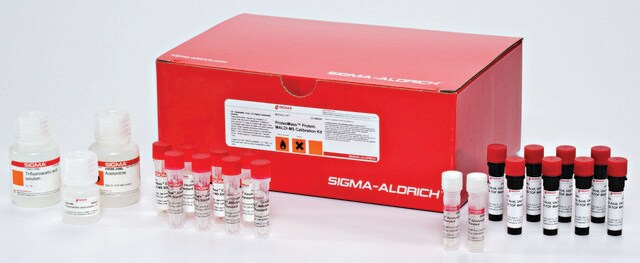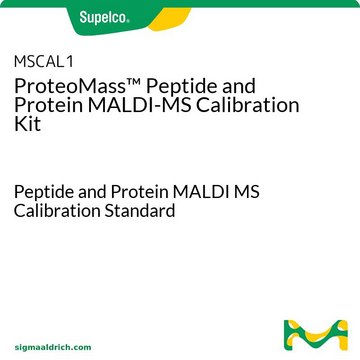ABT174
Anti-LGN Antibody
serum, from rabbit
Synonym(s):
G-protein-signaling modulator 2, Mosaic protein LGN, LGN
Sign Into View Organizational & Contract Pricing
All Photos(2)
About This Item
UNSPSC Code:
12352203
eCl@ss:
32160702
NACRES:
NA.41
Recommended Products
biological source
rabbit
Quality Level
antibody form
serum
antibody product type
primary antibodies
clone
polyclonal
species reactivity
mouse, rat
technique(s)
western blot: suitable
NCBI accession no.
UniProt accession no.
shipped in
wet ice
target post-translational modification
unmodified
Gene Information
mouse ... Gpsm2(76123)
General description
LGN is also known as G-protein-signaling modulator 2 (GPSM2). LGN has an important role in cellular structure and spindle pole orientation. LGN also stabilizes the apical complex during neuroblast divisions. LGN defects lead to Chudley-McCullough syndrome as well as a multiple micronuclei phenotype due to chromosomal mis-segregation and cell division errors.
Specificity
Other Homologies: Human (85% sequence homology), Chicken (75% sequence homology).
Immunogen
GST-tagged recombinant protein corresponding to mouse LGN.
Application
Anti-LGN Antibody is a highly specific rabbit polyclonal antibody, that targets LGN & has been tested in western blotting.
Research Category
Cell Structure
Cell Structure
Research Sub Category
Cytoskeleton
Cytoskeleton
Western Blotting Analysis: A 1:1,000 dilution from a representative lot detected LGN in mouse E16 brain tissue lysate.
Quality
Evaluated by Western Blotting in rat E16 heart tissue lysate.
Western Blotting Analysis: A 1:1,000 dilution of this antibody detected LGN in rat E16 heart tissue lysate.
Western Blotting Analysis: A 1:1,000 dilution of this antibody detected LGN in rat E16 heart tissue lysate.
Target description
~77 kDa observed. Uncharacterized bands may be observed at ~30 kDa, ~60 kDa, and ~70 kDa in some cell lysates.
Physical form
Rabbit polyclonal serum with 0.05% sodium azide.
Unpurified
Storage and Stability
Stable for 1 year at -20°C from date of receipt.
Handling Recommendations: Upon receipt and prior to removing the cap, centrifuge the vial and gently mix the solution. Aliquot into microcentrifuge tubes and store at -20°C. Avoid repeated freeze/thaw cycles, which may damage IgG and affect product performance.
Handling Recommendations: Upon receipt and prior to removing the cap, centrifuge the vial and gently mix the solution. Aliquot into microcentrifuge tubes and store at -20°C. Avoid repeated freeze/thaw cycles, which may damage IgG and affect product performance.
Analysis Note
Control
Heart tissue lysate
Heart tissue lysate
Disclaimer
Unless otherwise stated in our catalog or other company documentation accompanying the product(s), our products are intended for research use only and are not to be used for any other purpose, which includes but is not limited to, unauthorized commercial uses, in vitro diagnostic uses, ex vivo or in vivo therapeutic uses or any type of consumption or application to humans or animals.
Not finding the right product?
Try our Product Selector Tool.
Storage Class
10 - Combustible liquids
wgk_germany
WGK 1
Certificates of Analysis (COA)
Search for Certificates of Analysis (COA) by entering the products Lot/Batch Number. Lot and Batch Numbers can be found on a product’s label following the words ‘Lot’ or ‘Batch’.
Already Own This Product?
Find documentation for the products that you have recently purchased in the Document Library.
Par3-mInsc and G?i3 cooperate to promote oriented epidermal cell divisions through LGN.
Williams, SE; Ratliff, LA; Postiglione, MP; Knoblich, JA; Fuchs, E
Nature Cell Biology null
Kendall J Lough et al.
eLife, 8 (2019-12-14)
During organogenesis, precise control of spindle orientation balances proliferation and differentiation. In the developing murine epidermis, planar and perpendicular divisions yield symmetric and asymmetric fate outcomes, respectively. Classically, division axis specification involves centrosome migration and spindle rotation, events occurring early
Christie K Campla et al.
eNeuro, 9(5) (2022-10-01)
Trafficking of transducin (Gαt) in rod photoreceptors is critical for adaptive and modulatory responses of the retina to varying light intensities. In addition to fine-tuning phototransduction gain in rod outer segments (OSs), light-induced translocation of Gαt to the rod synapse
Martina Bonucci et al.
Nature communications, 11(1), 3200-3200 (2020-06-26)
mTOR activation is essential and sufficient to cause polycystic kidneys in Tuberous Sclerosis Complex (TSC) and other genetic disorders. In disease models, a sharp increase of proliferation and cyst formation correlates with a dramatic loss of oriented cell division (OCD).
Maria Fankhaenel et al.
Nature communications, 14(1), 151-151 (2023-01-12)
Oriented cell divisions are critical for the formation and maintenance of structured epithelia. Proper mitotic spindle orientation relies on polarised anchoring of force generators to the cell cortex by the evolutionarily conserved protein complex formed by the Gαi subunit of
Our team of scientists has experience in all areas of research including Life Science, Material Science, Chemical Synthesis, Chromatography, Analytical and many others.
Contact Technical Service








